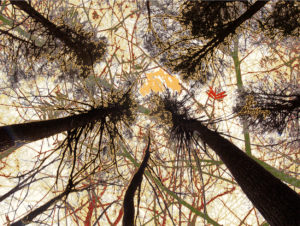Where’s the Library at, a**hole?
In the old grammar joke, that’s how the bright freshman responds to the Harvard professor when he’s reprimanded for ending a sentence with a preposition. Finding balance between being right and being obnoxious is a delicate dance, one I’m beginning to wonder is worth navigating at all.
I was an English major. I am an avid reader. I spend most of my day thinking about writing—my own or that of others. But admittedly I break “The Rules” all the time. To me, beginning a sentence with a conjunction is a reasonable move if it renders a sentence more approachable. And (see what I did there?) while some will take issue with me, I won’t lead the charge for who vs. whom or can vs. may. In modern parlance, they have become nearly interchangeable (cue the wailing of middle school English teachers). Even so, I wonder which, if any, rules matter anymore as we contend with the daily torrent of words we both consume and produce.
Language is a living thing, one that’s always changing and adapting. I appreciate being afforded these greater degrees of nuance. Each year Webster’s Dictionary adds over a thousand new words to the lexicon. For instance, the next time I spy a typo on the froyo shop sign and react with a facepalm, you’ll be able to accurately describe my action and its cause. But after the facepalm? What next? What happens when the daily twitterings out of the highest office in the land are a bland word salad composed of limp iceberg lettuce mixed with “great” carrots and “huge” cucumbers. Do words and the rules governing them matter anymore?
And speaking of typos: over the past two weeks or so, a number of flagrant errors have accosted my hypersensitive eye: the political mailers advocating for the “perseveration of rights” and “formally incarcerated individuals.” Or the KFC placard—fast food signs being a notorious source of typos—touting its spicy chicken “sanwich.” Even those who know better (or should know to be more careful) make these mistakes, such as the nonprofit executive director who writes of his staff’s “extrodinary” work. Do proofreaders still exist? Or are most people counting on autocorrect to save their bacon? These missteps send me rifling through the junk drawer for the nearest red pen. As the coffee mug slogan goes, I am silently judging your grammar. (Like vs. as. There’s another one.)
I recently finished reading a long novel that I’d checked out from the library. A fellow library patron had noted a typo on one of the pages by circling it with a pink highlighter. And not just circled it, but attempted to excise the errant word ending with the correct proofreader’s mark. Clearly one of my people. While I would not have done so myself (marking a library book a graver sin than making a typo) I recognized, even appreciated, this act of resistance. For lovers of language, such mistakes make us twitch. We want to make it right. We’re the ones who, on happening across the lovely word ‘lexicon,’ say it to ourselves under our breath: lexicon, lexicon, lexicon, until we’re driven to the dictionary to relearn that it’s derived from the Greek lexis, meaning word or speech.
What if, to use another word from the same Greek root, you’re dyslexic? What if, dyslexic or not, you simply couldn’t care less if someone swaps perseveration for preservation. Eh, you figure, they know what I mean. Maybe I should remove the comma splice from my own eye before noting you used complementary where you should have chosen complimentary. Maybe if we writers and readers are the standard bearers, we can share our love of language with the rest of the world without sounding like a**holes. Shall we discuss it? Shall we discuss shall?
Lisa Zerkle’s poems have appeared in The Collagist, Comstock Review, Southern Poetry Anthology, Broad River Review, Tar River Poetry, Nimrod, Sixfold, poemmemoirstory, Crucible, and Main Street Rag, among others. Author of the chapbook, Heart of the Light, she has served as President of the North Carolina Poetry Society, community columnist for The Charlotte Observer, and editor of Kakalak. She is the curator of Charlotte Lit’s 4X4CLT, a public art and poetry series.


